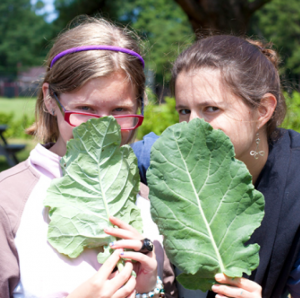Happy new school year, everyone! For this month’s data digest, we are looking again at the results from the 2017 Youth Risk Behavior Study (YRBS) to try to determine whether participation in afterschool activities might affect students’ feelings of school safety and as well as how frequently students get into fights. In past digests, we have looked at similar topics such as afterschool participation and the likelihood of students carrying weapons to school as well as afterschool participation and bullying. In both cases we saw strong evidence that afterschool programs were at least partly responsible for decreasing weapons-carrying and bullying among high school students in Vermont. For similar reasons, we suspect that afterschool participation plays a role in preventing fights and feelings of unsafety among these teens. Let’s take a look at the survey data.
In 2017, the more than 20,000 Vermont high school students that completed the YRBS were asked whether they had gotten into a physical fight (either on school property or elsewhere) at any point within the preceding 12 months. We took this data and cross-tabulated it with rates of participation in afterschool programming. As seen in the charts below, students who participated in any hours of afterschool programming per week were less likely to report having been in a physical fight at some point than students who did not participate in any amount of afterschool programming that year.
Among students who did not participate in any hours of afterschool programming, 21% reported that they had gotten into a physical fight at least once in the preceding year. This percentage decreased to 14% for students who participated in between 1 and 4 hours of weekly programming, 15% for students who participated in between 5 and 9 hours of weekly programming, and 14% for students who participated in between 10 and 19 hours of weekly programming.
Among students who did not participate in any hours of afterschool programming, 8.1% reported that they had gotten into a physical fight on school property at least once in the preceding year. This percentage decreased to 5.1% for students who participated in between 1 and 4 hours of weekly programming, 5.5% for students who participated in between 5 and 9 hours of weekly programming, and 4.6% for students who participated in between 10 and 19 hours of weekly programming.
When students are engaged in safe and structured programming during the late afternoon and early evening hours when juvenile crime peaks, it makes sense that they will have fewer opportunities to get into fights. They are also less likely to do drugs or drink alcohol, which are linked with higher instances of physical violence among teens. Teens who carry weapons to school are also more likely to get into physical fights, and we already know that Vermont high school students who attend afterschool programs are less likely to carry weapons to school.
Carrying weapons, partaking in illegal substances, and physical fighting — these risk behaviors are not only all linked with each other but also all decrease among Vermont high school students when these students are engaged in afterschool programming on a regular basis. A big part of the reason is undoubtedly the presence of a safe and engaging environment in the late afternoon hours. We also believe strongly in Youth Voice: that is, when youth are empowered to share their opinions and express their needs, they will undoubtedly be more likely to seek out positive experiences and conflict-resolution strategies.
Above all, we want Vermont’s youth to feel safe during all hours of the day, which is supported by the assurance that they have positive outlets for interacting with one another and solving problems. In the chart below, which is also derived from 2017 YRBS data, we observe that afterschool programming is indeed correlated with feelings of safety; students who attend regular programming are less likely to skip school due to feeling unsafe.
Among students who did not participate in any hours of afterschool programming, 6.7% reported that they did not go to school at some point in the preceding month because of feeling unsafe. This percentage decreased to 4.2% for students who participated in between 1 and 4 hours of weekly programming, 3.1% for students who participated in between 5 and 9 hours of weekly programming, and 2.6% for students who participated in between 10 and 19 hours of weekly programming.
Once again, we have recent data from real youth in Vermont demonstrating the important role that afterschool programming plays in helping to prevent youth from engaging in unhealthy and risky behaviors. This current analysis ties back to several analyses from past data blog posts to help support this base of knowledge that we are building upon. Let’s continue our push to increase access to supportive programming for all young people in the state.

